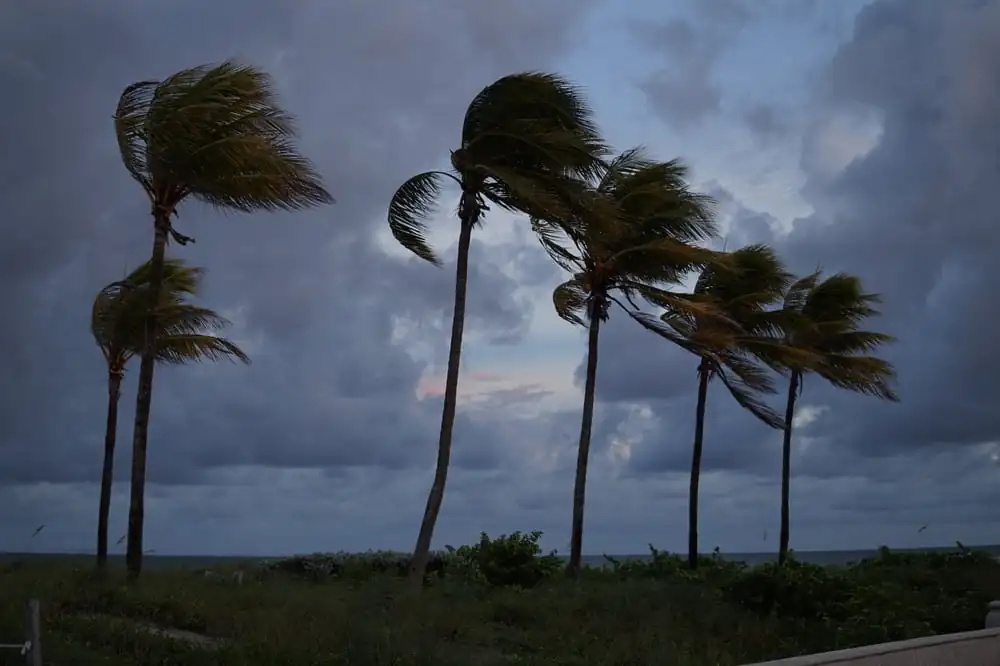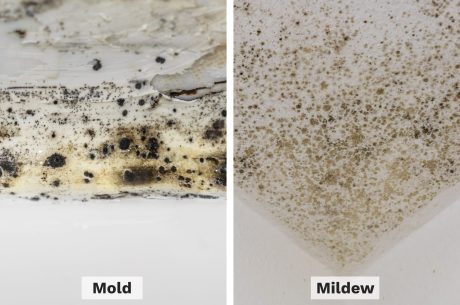As restoration specialists, we often encounter the pervasive issue of mold in homes and buildings. Mold is not merely an aesthetic nuisance; it poses significant health risks and can cause structural damage if left untreated.
In this blog post, we will delve into the essential facts about mold, shedding light on its origins, the potential hazards it presents, and the steps you can take to protect your property and well-being. Understanding mold is the first step towards effective prevention and remediation, ensuring a safe and healthy living environment for you and your loved ones.
Before We Start, What is Mold?
Mold is a type of fungus that thrives in damp, warm, and humid environments. It exists in various forms, including visible growths on surfaces and microscopic spores floating in the air. Mold reproduces by releasing these tiny spores, which can settle and grow on virtually any organic material, provided the conditions are favorable. Common household items such as wood, paper, carpet, and food can all become breeding grounds for mold.
Mold comes in a variety of colors, including black, green, white, and orange. While some molds are relatively harmless, others can produce allergens, irritants, and toxic substances known as mycotoxins. Prolonged exposure to mold, especially toxic varieties like Stachybotrys chartarum (often referred to as “black mold”), can lead to a range of health issues, from mild allergic reactions to severe respiratory problems.
Understanding what mold is and recognizing its potential impact is crucial for maintaining a safe and healthy living environment. In the following sections, we will explore the different types of mold, how it spreads, and what you can do to prevent and manage mold growth in your home.
For Mold Removal Service in New Jersey, Call (877) 750-7876
10 Interesting Facts About Mold
Mold is a common household nuisance that can pose health risks and cause property damage if left unchecked. Here are some lesser-known facts about mold that you may find surprising:
1. Mold Is Ubiquitous
Mold is present everywhere, playing a vital role in the decomposition of organic matter. Tiny mold spores are omnipresent, including in your home. While many molds are harmless, issues arise when these spores find moist areas to grow in.
2. There Are Over 100,000 Types of Mold
With over 100,000 known species, mold is incredibly diverse, most existing outside the home. Not all molds are harmful; some are even beneficial in medicine. However, molds commonly found indoors, such as Cladosporium, Aspergillus, Penicillium, Stachybotrys, and Alternaria, can be detrimental to health.
3. Mold Can Thrive on Various Surfaces
Mold flourishes in moisture-prone areas like bathrooms and basements but can also hide behind walls. It prefers organic or porous surfaces for growth. While it can’t grow directly on non-organic surfaces like concrete, it can thrive on dust or dirt present on these surfaces.
4. Mold Grows Rapidly
Under the right conditions, mold can begin to grow within 24 to 48 hours after a water damage event. Ideal conditions include a food source (such as drywall), moisture, and temperatures between 77°F and 88°F. Thus, timely water damage remediation is crucial to prevent mold proliferation after flooding.
5. Painting Over Mold Is Ineffective
Simply painting over a mold-infested surface won’t solve the problem. Mold will eventually penetrate the paint and resurface. It’s essential to completely remove the mold before painting and consider using mold-resistant paint for better protection.
6. Mold Is Ubiquitous
Mold is present everywhere, playing a vital role in the decomposition of organic matter. Tiny mold spores are omnipresent, including in your home. While many molds are harmless, issues arise when these spores find moist areas to grow in.
7. There Are Over 100,000 Types of Mold
With over 100,000 known species, mold is incredibly diverse, most existing outside the home. Not all molds are harmful; some are even beneficial in medicine. However, molds commonly found indoors, such as Cladosporium, Aspergillus, Penicillium, Stachybotrys, and Alternaria, can be detrimental to health.
8. Mold Can Thrive on Various Surfaces
Mold flourishes in moisture-prone areas like bathrooms and basements but can also hide behind walls. It prefers organic or porous surfaces for growth. While it can’t grow directly on non-organic surfaces like concrete, it can thrive on dust or dirt present on these surfaces.
9. Mold Grows Rapidly
Under the right conditions, mold can begin to grow within 24 to 48 hours after a water damage event. Ideal conditions include a food source (such as drywall), moisture, and temperatures between 77°F and 88°F. Thus, timely water damage remediation is crucial to prevent mold proliferation after flooding.
10. Painting Over Mold Is Ineffective
Simply painting over a mold-infested surface won’t solve the problem. Mold will eventually penetrate the paint and resurface. It’s essential to completely remove the mold before painting and consider using mold-resistant paint for better protection.
11. Mold Can Grow on Christmas Trees
Mold can also “decorate” your Christmas tree, growing under garlands and lights. All vegetation, including live Christmas trees, have mold spores on them. The warmth inside the home and moisture on the tree can trigger mold growth on its branches. To avoid Christmas tree mold, use artificial trees and decorations. If you prefer live trees, hose them down before bringing them inside to remove mold spores, and don’t keep the tree indoors for too long.
12. Bleach Does Not Kill Mold Spores
Many people use bleach to get rid of mold in their homes. While bleach can kill live mold, it does not eliminate mold spores. Furthermore, using bleach and water can sometimes encourage mold to regrow more rapidly. For small-scale mold infestations (less than 10 square feet), use a mix of household detergent and water.
13. Insurance Policies Often Do Not Cover Mold
Most homeowners insurance policies cover mold damage only under specific circumstances, such as after accidents like fire, lightning, or sudden water issues. However, mold caused by neglected maintenance of the property is typically not covered.
14. Mold Comes in Many Colors
Mold can appear in various colors, including green, black, white, yellow, and orange. The color of mold does not necessarily indicate its toxicity, but certain types, such as black mold (Stachybotrys chartarum), are known to produce toxins.
15. Mold Can Cause Health Problems
Exposure to mold can cause a range of health issues, including allergic reactions, respiratory problems, asthma exacerbation, sinus infections, and skin irritation. Individuals with compromised immune systems, allergies, or respiratory conditions are particularly vulnerable.
16. Hyphal Growth
Mold colonies consist of branching filaments called hyphae. These hyphae extend and branch out to form a network known as mycelium, which is the main body of the fungus responsible for nutrient absorption and growth.
17. Unique Cellular Structure
Mold cells have unique cellular structures compared to plants or animals. They lack chlorophyll and cannot perform photosynthesis, relying instead on organic matter for nutrition. Mold cell walls are composed of chitin, a complex carbohydrate similar to what forms the exoskeletons of insects.
18. Ecological Importance
Mold plays a crucial role in ecosystems by breaking down organic matter and recycling nutrients. As decomposers, molds help to decompose dead plant and animal material, returning essential nutrients to the soil and facilitating nutrient cycling.
19. Toxin Production
Some molds produce secondary metabolites known as mycotoxins, which can be harmful to humans and animals if ingested or inhaled. Mycotoxins are produced as a defense mechanism against competing organisms and can have various adverse effects on health.
20. Medical Significance
Certain mold species can cause opportunistic infections in humans, particularly in individuals with weakened immune systems. Fungal infections, such as aspergillosis and candidiasis, can be life-threatening if left untreated.
21. Regular Inspections Are Essential
Regular inspections of your home for signs of water damage, leaks, and mold growth are crucial for early detection and prevention. Prompt action to address moisture issues can help prevent mold problems from escalating.
Call Us for Expert Mold Removal in New Jersey – (877) 750-7876
Living in a mold-infested home can be a nightmare. Fortunately, PuroClean Emergency Recovery Services New Jersey is here to help. With years of experience and a team of skilled professionals, we have the expertise you need to eliminate and prevent mold in your home and give you a fresh start.
Our team has the knowledge and tools to make your home mold-free. Don’t put off your mold concerns any longer. Get in touch with us today at (877) 750-7876 and start enjoying a cleaner, fresher, and healthier living space!
Mold is more than just an unsightly nuisance; it poses serious health risks and can lead to significant property damage if left unaddressed. From its pervasive presence in our environment to its rapid growth under the right conditions, understanding mold is crucial for maintaining a healthy and safe home. By being aware of the diverse types of mold, the surfaces they can inhabit, and the ineffective methods of dealing with them, you can take informed steps to protect your living space.
Regular inspections, timely water damage remediation, and using appropriate cleaning methods are essential to prevent and manage mold growth. Whether it’s avoiding mold on your Christmas tree or understanding why bleach isn’t a foolproof solution, these insights empower you to make better decisions in mold prevention and control. Remember, the key to a mold-free home lies in proactive measures and continuous vigilance. Stay informed, act swiftly, and ensure a safe, healthy environment for you and your loved ones.




 PuroClean Emergency Recovery Services
PuroClean Emergency Recovery Services